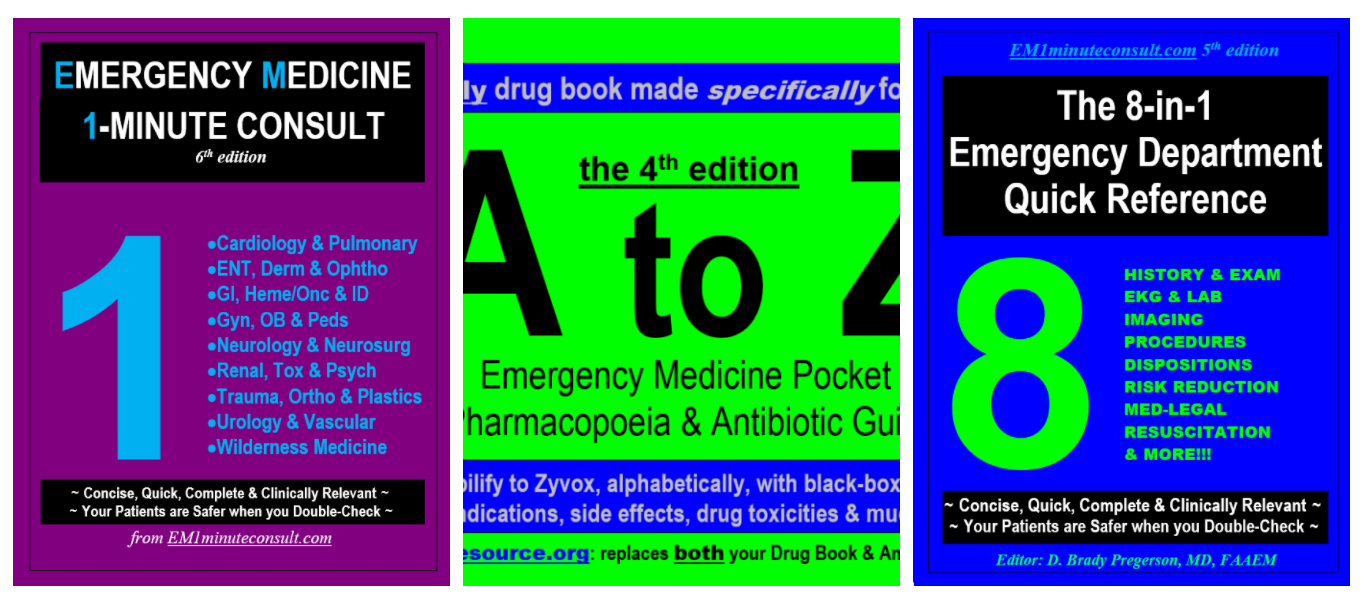History of Present Illness: A man in his early 60’s presents to the ER for 10 days of R wrist pain. He was seen the day it started and put on antibiotics and ibuprofen which helped some but it still hurts a lot and looks the same. X-rays of the hand/wrist/forearm were read out as normal
Vital Signs & Physical Exam: Vital signs are normal
Physical exam is otherwise normal except for slight R wrist swelling/redness/tenderness
Initial Diagnostic Testing:
- CBC: normal except but CRP elevated at 1.6
- Chem-7: normal
- Imaging:
What is the most likely diagnosis?
- A) Cellulitis with resistance
- B) Septic arthritis
- C) Pseudogout
- D) Tenosynovitis
SCROLL DOWN FOR ANSWERS & 1-MINUTE CONSULT
<<<<<<<<<<<<<<<<<<<<< ADVERTISEMENT & SPACER >>>>>>>>>>>>>>>>>>>>>
THE EMERGENCY MEDICINE POCKETBOOK TRIFECTA

Emergency Medicine 1-Minute Consult, 5th edition
A-to-Z EM Pharmacopoeia & Antibiotic Guide, BRAND NEW 5th edition
8-in-1 Emergency Department Quick Reference, NEW 5th edition
******************************************************************************
<<<<<<<<<<<<<<<<<<<<<<<<< END SPACER >>>>>>>>>>>>>>>>>>>>>>>>>
ANSWER:
- A) Ovarian cyst – usually painless if simple and <2.5cm
- B) Mittleshmerz – a diagnosis of exclusion and would need to know where she was in her cycle. Should be midcycle and rarely lasts more than a day
- C) PID – common and frequently presents with mild and/or atypical symptoms along with an unimpressive exam and CBC.
- D) Ovarian torsion – unlikely given size of follicle/cyst and clinical presentation
1-Minute EM Consult on the topic for this case from the Emergency Medicine 1-minute Consult Pocketbook
Click here for the free online em1minuteConsult page
CASE CONCLUSION: XR knee showed CPPDD
CASE LESSONS: Pseudo-gout is a rare condition that is not infrequently misdiagnosed initially. It is one of the most common causes of atraumatic wrist pain and swelling in older individuals.
